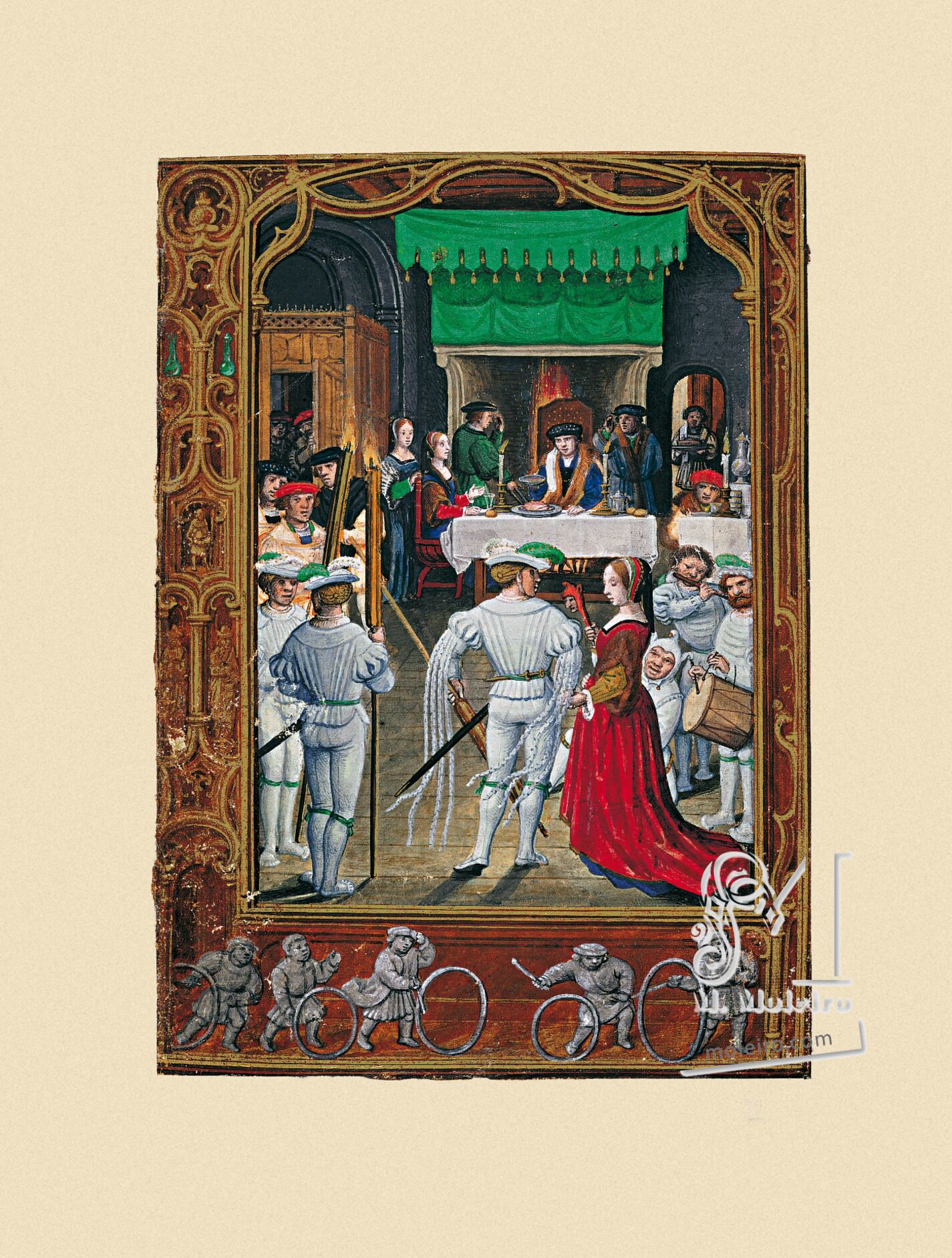The main miniature features an indoor scene with a noble couple sitting at a table in the foreground surrounded by servants. The lady – attended by the handmaiden standing behind her holding a high-backed chair (a symbol of her high social rank) – seems to speak to her husband lavishly clothed in a tunic with a sable collar holding a bowl of liquid. Like most of the men in the room except the servants, musicians and the dancer, the lord wears a small, soft cap with a slightly raised crown and very narrow rim. The shirt collar, of German origin, is quite high and trimmed by a narrow, gathered edge. Upon the table are two candlesticks each with a lit candle, a platter of meat, loaves of bread, a metal container possibly for drinks, and a glass goblet which reveals the high social standing of the figures. One of the servants behind the lord pokes the fire whilst another man on the right in lavish garments shields his face from the heat of the fire. Beneath an arch on the left are several men looking through a door at the scene, whilst a servant carrying a bowl emerges from another door on the right. These two elements help endow the group with greater depth. Several men in the midway distance watch what is happening in the foreground where two servants holding torches can be seen on one side opposite several musicians playing a melody on a flute to the sound of a drum. Beside them is a jester or fool in the typical horned cap with bells and mock sceptre. In early sixteenth-century Flanders, jesters were known for their impudent, risqué wit. The couple in the centre is about to start dancing. Like the other servants and dancers, the man wears a doublet with gusseted sleeves and full-length hose with a ribbon tied around each leg. The dancer differs from the others, however, by his loose, decorative, slit sleeves hanging from the forearm. He wears a sort of golden dagger tied to his waist. His footwear is of the narrow, closed, duck’s beak type that appeared around 1530. The damsel about to dance, the lady at the table and the handmaiden accompanying her, on the other hand, are similar in appearance. Their hair is styled using a coif like a long sheath hanging down their back containing their braided hair, with the rest of their hair clinging to their face in a single curl on each cheek. Their dresses have very wide necklines that reveal the shoulders, a straight lower edge and are covered with a partlet made of thick fabric. The lady and the female dancer wear tunics with flared, sable outer sleeves and close-fitting sleeves underneath, and the lady behind them, gusseted, puffed sleeves. The main scene is set in the background and concerns winter feasts or, bearing in mind the month being depicted, perhaps a feast related to carnival, as perhaps suggested by the image of another small jester painted in cameo fashion in a niche on the left of the border around the painting.
The bas-de-page of the border surrounding the main scene and the text shows a series of children depicted in grisaille playing with a hoop.
Carlos Miranda García-Tejedor
Doctor in History
